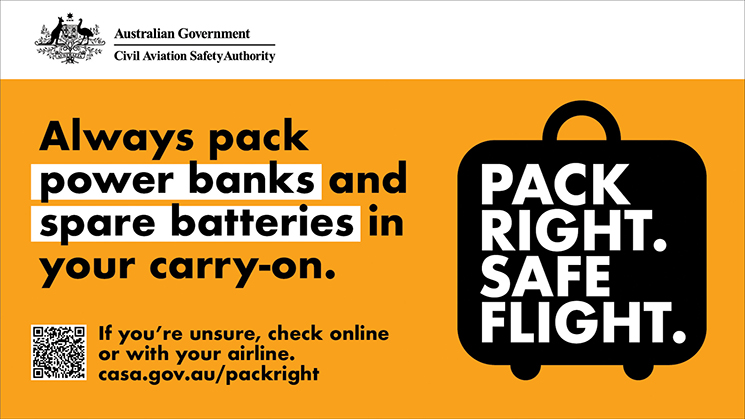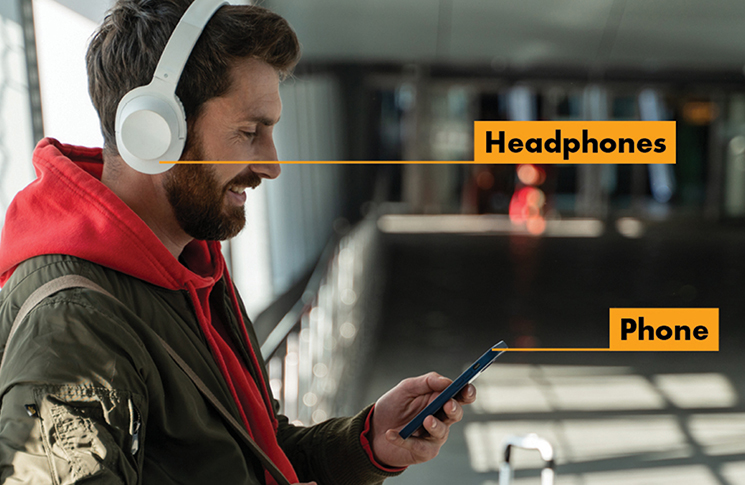The lithium-ion batteries that make our modern connected lifestyles possible are also a new form of aviation hazard. Handle them with care.
Everyone carries lithium-ion battery-powered devices these days. From smartphones and laptops to headphones and digital cameras, we rely on these batteries to charge quickly and be long lasting, especially when we’re travelling.
However, with the widespread use of devices containing these batteries, the risk to the aviation industry has increased, prompting airlines, airports and regulatory bodies to reassess how they manage these hazards.
Small battery, big problem
Lithium-ion batteries are commended for their small size, high energy density and ability to be repeatedly recharged. But the batteries also have drawbacks, such as their tendency to overheat, their sensitivity to hot and cold temperatures, as well as the environmental impacts with the chemicals they contain.
One of the biggest issues is the risk of ‘thermal runaway’. This is a rapid, uncontrolled chemical reaction that can cause the battery to rupture. Once ignited, lithium-ion batteries emit toxic fumes and generate self-sustaining flames that are difficult to extinguish.
Several recent high-profile incidents have been attributed have been attributed to malfunctioning lithium-ion batteries causing major fires.
A renewed emphasis on dangerous goods safety
In Australian aviation, lithium batteries are classed as dangerous goods, an item or substance that can pose a risk to safety, property or the environment when transported by air.
However, there is a renewed effort to raise awareness among travellers about the importance of understanding what constitutes dangerous goods and how to pack them correctly.
Once ignited, lithium-ion batteries emit toxic fumes and generate self-sustaining flames that are difficult to extinguish.
The Civil Aviation Safety Authority (CASA) conducted in-depth research to better understand the travelling public’s awareness, attitudes and behaviours when it comes to carrying dangerous goods. Travellers from diverse demographics – including age, travel frequency and experience – were asked about how they packed everyday items that can unknowingly pose a risk on an aircraft.
Responses ranged from not knowing what dangerous goods are, to travellers not having any consideration for dangerous goods when packing.
Armed with these insights, CASA developed a strategy to promote and educate the travelling public about dangerous goods, including what they are, where they should be packed and, perhaps most importantly, how they should be packed.

Pack Right. Safe Flight.
In March, CASA launched its new dangerous goods campaign, ‘Pack Right. Safe Flight.’ at the Avalon International Airshow (see casa.gov.au/packright). The campaign takes an educational approach by providing clear and simple advice to passengers about items that are or are not allowed onboard, provides guidance on proper packing techniques and outlines items that are banned from aircraft.
Safety Campaigns Manager Andrew Sillis says, ‘Our research found many travellers lack awareness of what items are considered dangerous goods and expect to receive clear, early messaging from their airline and airport, supported by CASA, up to a week before check-in.
‘In response, the campaign focuses on raising awareness and changing behaviour through targeted, accessible, consistent and frequent communication, from booking to boarding.’
The new dangerous goods branding is already being adopted by airlines and airports. They’ve started integrating the new messaging and iconography into their customer contact points, including emails, websites, ticketing information, flight reminders, check-in counters and departure gates.

Sam Bitossi, Team Leader of CASA’s dangerous goods inspectorate, says that with the introduction of the ‘Pack Right. Safe Flight.’ campaign, the team hopes to see a reduction in dangerous goods incidents reported to CASA, specifically in relation to dangerous goods that are not permitted in passenger-checked baggage.
‘Previous dangerous goods awareness campaigns have primarily focused on the travelling passenger when they are at the check-in phase of their flight,’ she says. ‘The new campaign targets passengers earlier, when they’re at home packing for their trip in the days leading up to their flight.
‘We hope that by raising awareness before travellers reach the airport, they’ll pack more thoughtfully, reducing the risk of inadvertently including dangerous goods, such as power banks and spare batteries, that are not permitted in their checked baggage.’
At the time of going to print, an Australian domestic carrier had had a reported lithium battery incident in-flight, which is under investigation by the ATSB. In South Korea, a preliminary report from the nation’s Transport Ministry suggested the fire that destroyed an airliner on the ground in January this year at Gimhae International Airport in Busan was likely caused by a power bank stored in an overhead luggage bin, which may have short-circuited and sparked the blaze.





